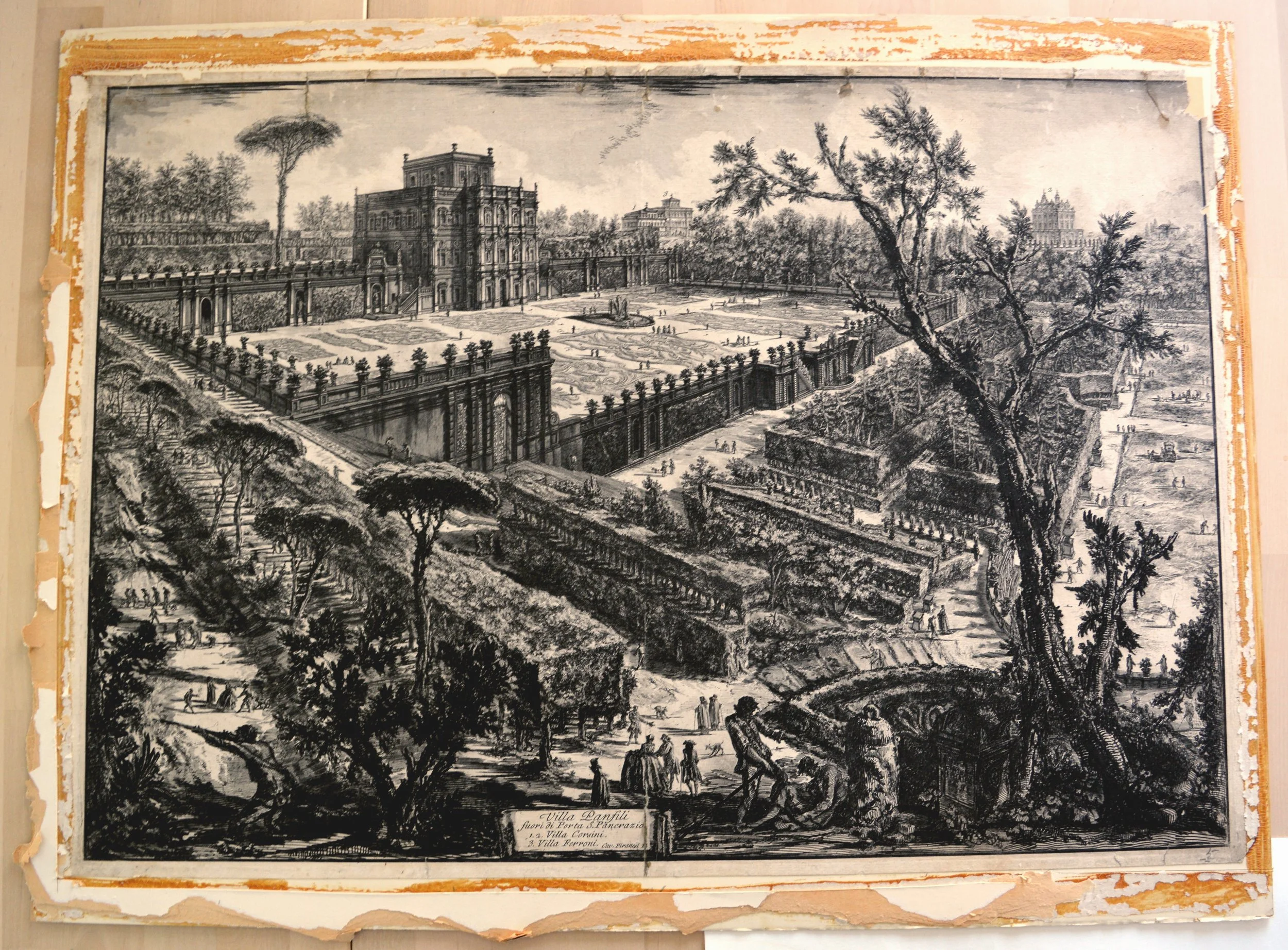Selected treatment Examples
landscape etching by piranessi
Before treatment
After treatment
Giovanni Battista Piranesi, Villa Panfili, work carried out in 2022.
This large etching was adhered to an acidic support board and a mat had been adhered to the borders of the paper on the front. Fragments of mat and adhesive were removed from the front, while the backing board was carefully removed first mechanically, then using moisture to soften the adhesive and release the board. The print was washed in an alkali bath at pH 8, then tears were repaired. The paper was thinner in the center and was lined to provide overall structural support. Paper losses were filled with replacement toned paper, and minor retouching was carried out in the fill paper in the upper right corner to maintain the integrity of the image. This retouched area is removable and no retouching was carried out in the original printed area.
Upper left corner with losses after lining with Kozo paper.
Losses were filled with a paper fill of similar thickness and fiber content to the original paper sheet
The paper fills were toned with graphite to approximate the tone of the original paper. These fills are fully reversible.
Watanabe stencil
Before treatment: Blue arrows indicate where tear repairs are needed; red indicate where tape needs to be removed.
After treatment: all tape was removed and all tears repaired with Japanese tengujo paper
A traditional Japanese technique, stencil cutting is a highly skilled craft for creating stencils for the transferring of patterns onto cloth. They are made of two layers of Japanese kozo paper painted with fermented persimmon juice, then smoked to artificially age the paper and impart stiffness. Sadao Watanabe used this craft to create stencils for printmaking. These needed to be prepared for an exhibit, but contained repairs carried out by a relative of the artist using a tape marketed as archival. Unfortunately, this tape was not easy to remove and was not designed to be reversible. Such tapes can fail over time or discolor the paper they are applied to and are best removed. They were also visually unappealing and distracted from the artist’s original vision for the stencil. Additional tears had formed where the stencil was thin, requiring repairs.
The archival tape was carefully removed using a solvent to soften the adhesive. Any residues were removed with the solvent, and the remaining tears repaired with a thin Japanese tengujo paper applied to the back of the stencil. This paper, while thin, contains very long fibers, making it an excellent repair paper. Wheat starch paste was used to apply the repair tissue, which is completely reversible with water.
A repair with “archival” tape can be seen here in the sun at the top of the stencil. While the carrier for the tape appears to be a mulberry paper, which is usually a good choice for a repair, the adhesive is similar to tapes such as Scotch tape, necessitating its removal.
The archival tape was removed and replaced. The replacement repair tissue is adhered with wheat paste and is fully reversible
A leaf with complicated carving has torn, necessitating a repair. The area available for the repair is extremely small, necessitating care and precision.
A small strip of repair tissue was applied using wheat paste. It was applied to the back of the stencil and is not visible from the front. The long fibers in the tengujo paper were aligned to bridge the tear, ensuring that the repair is strong, even though it is very small.










